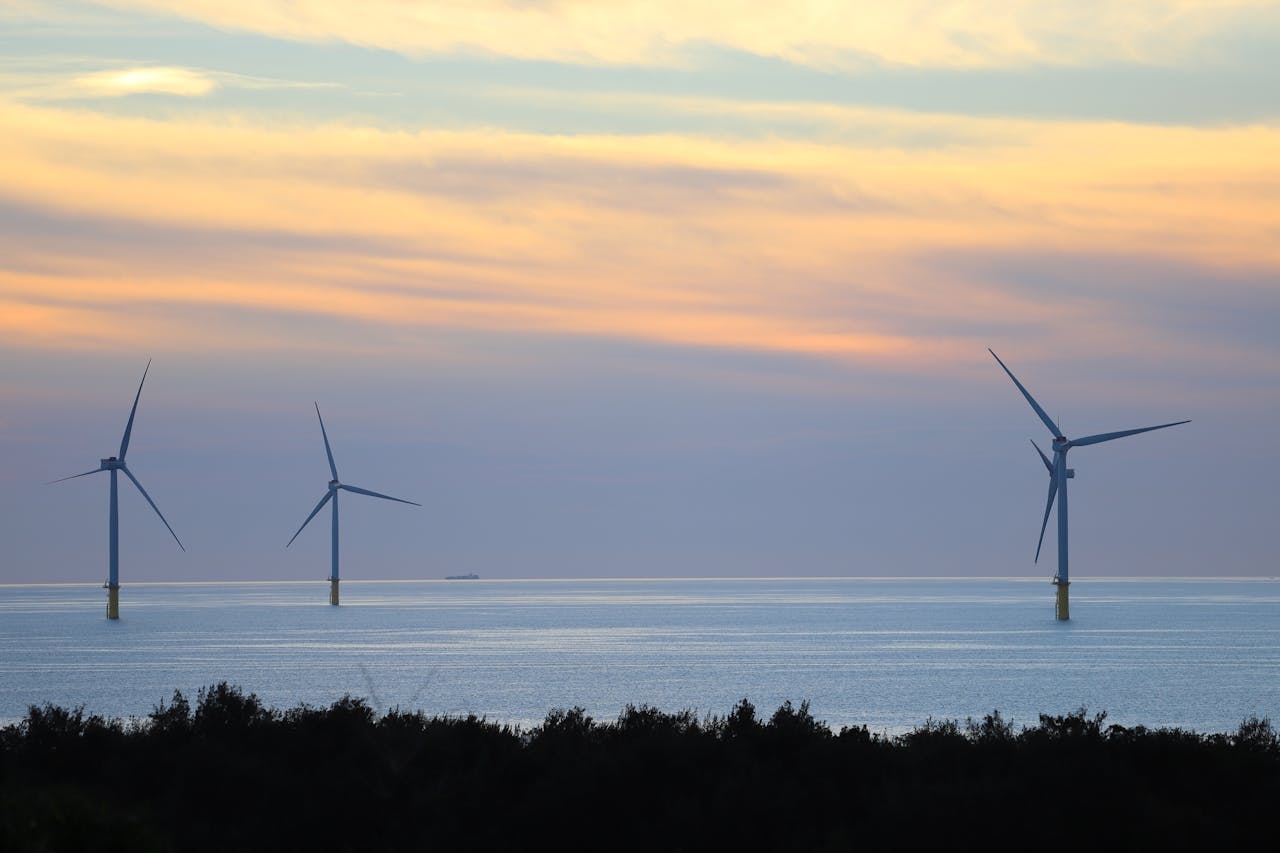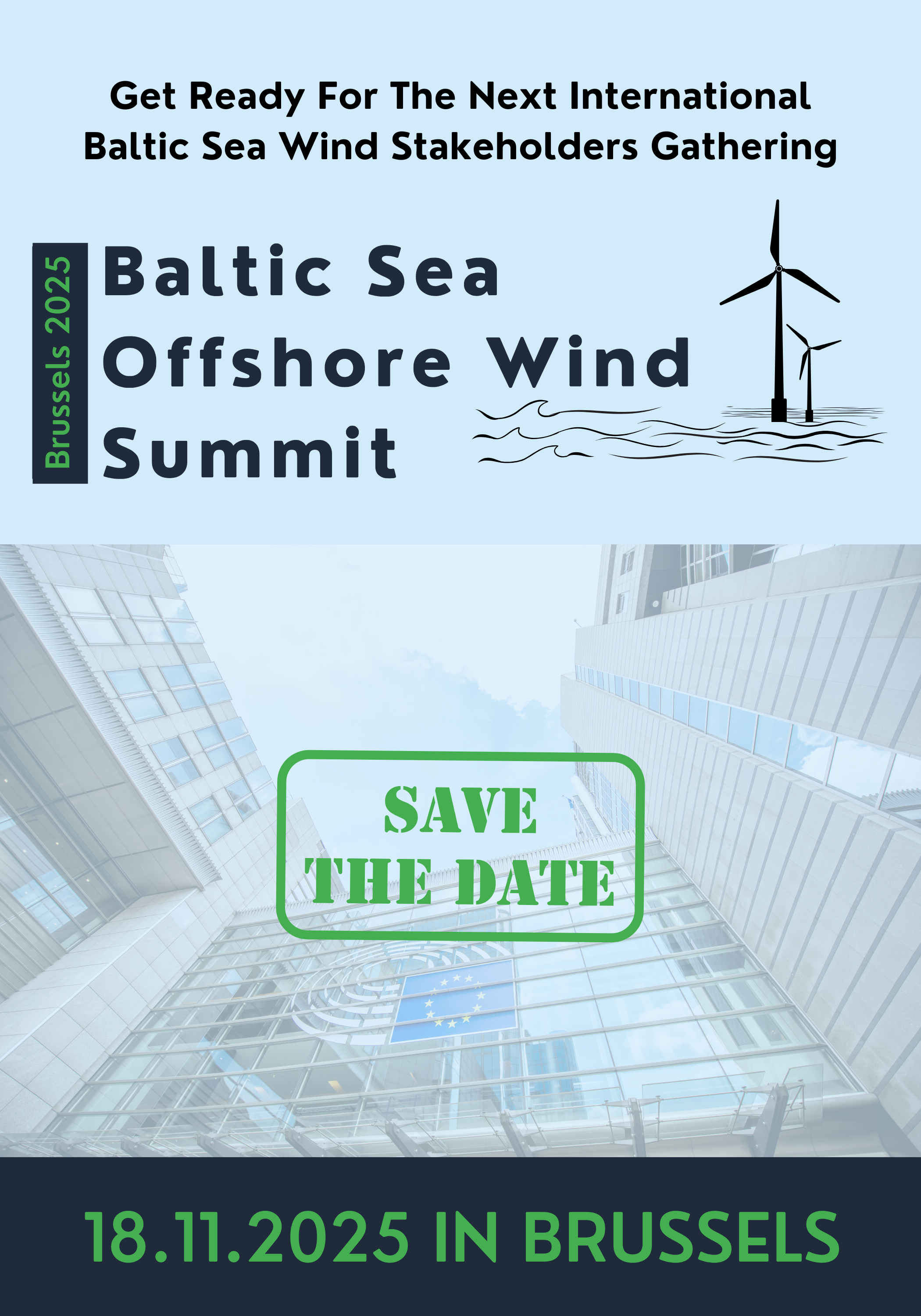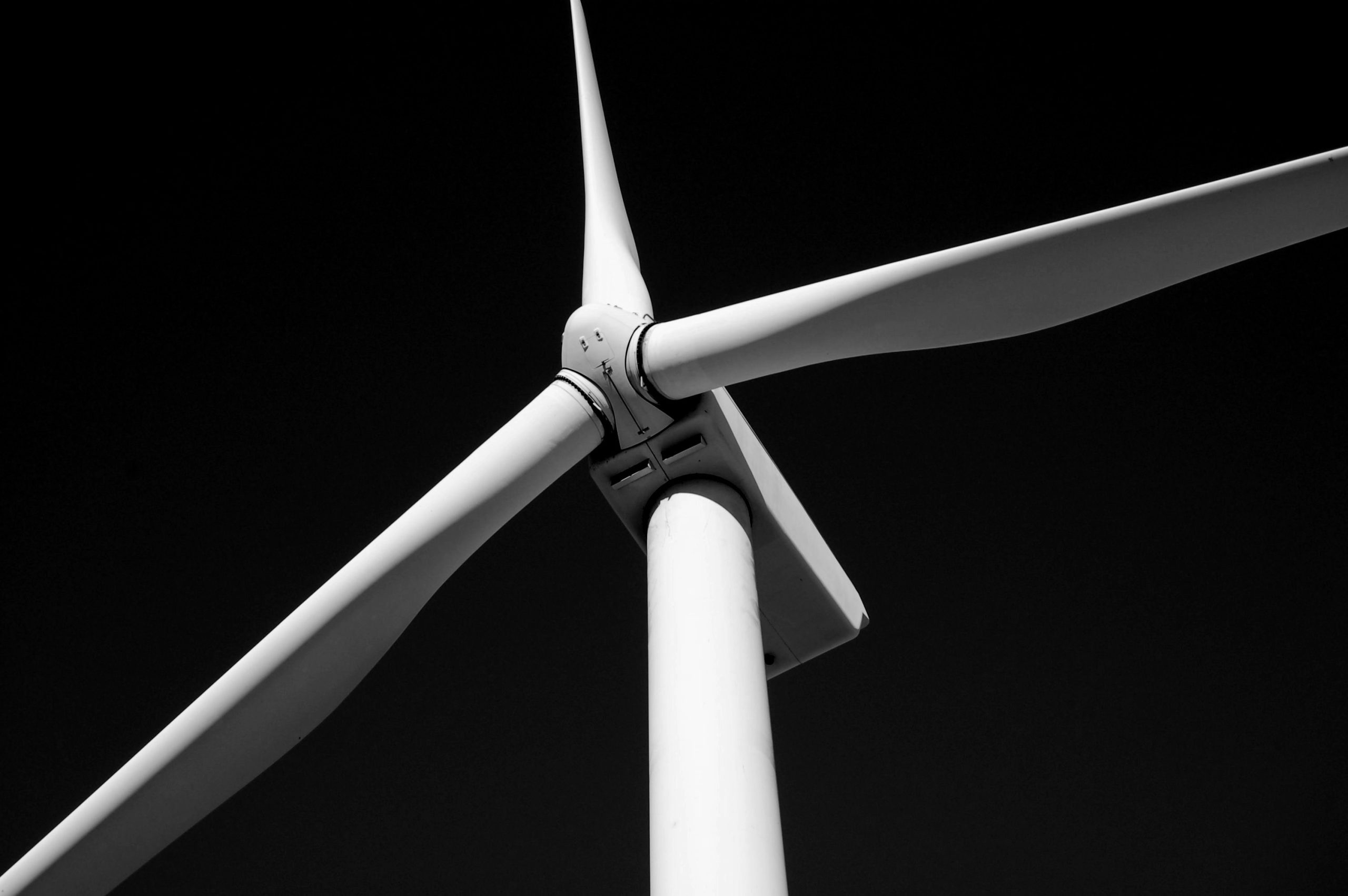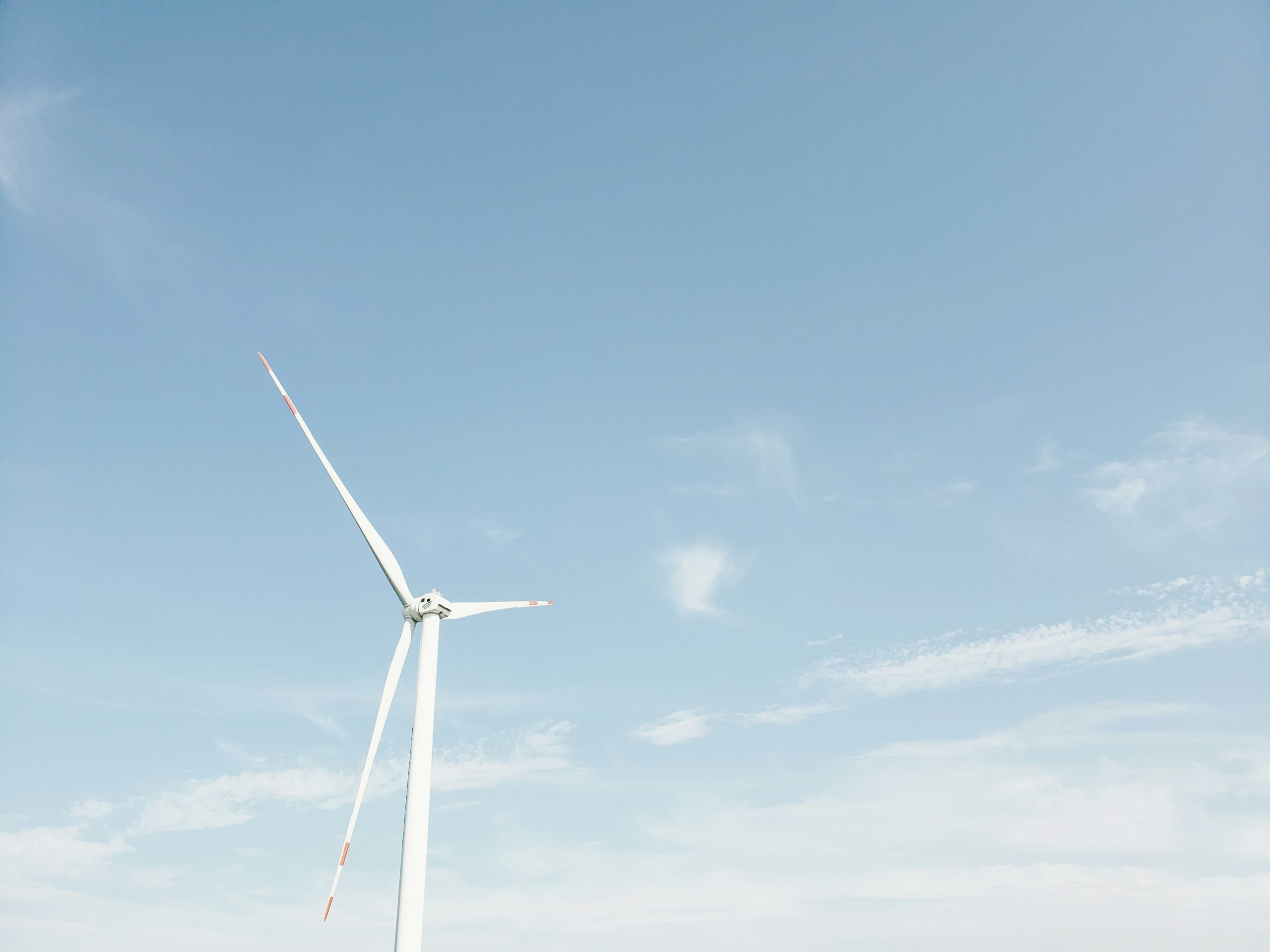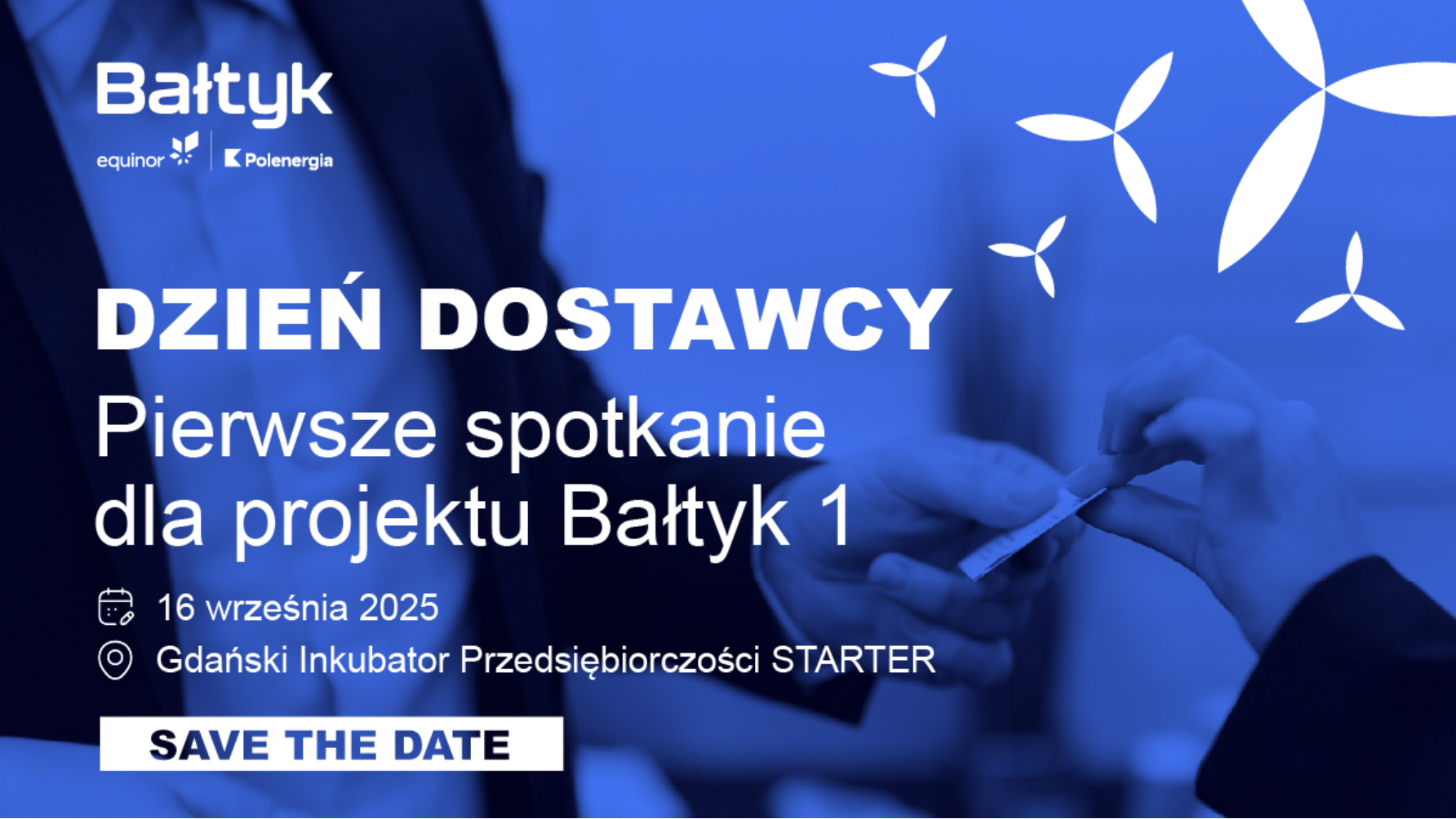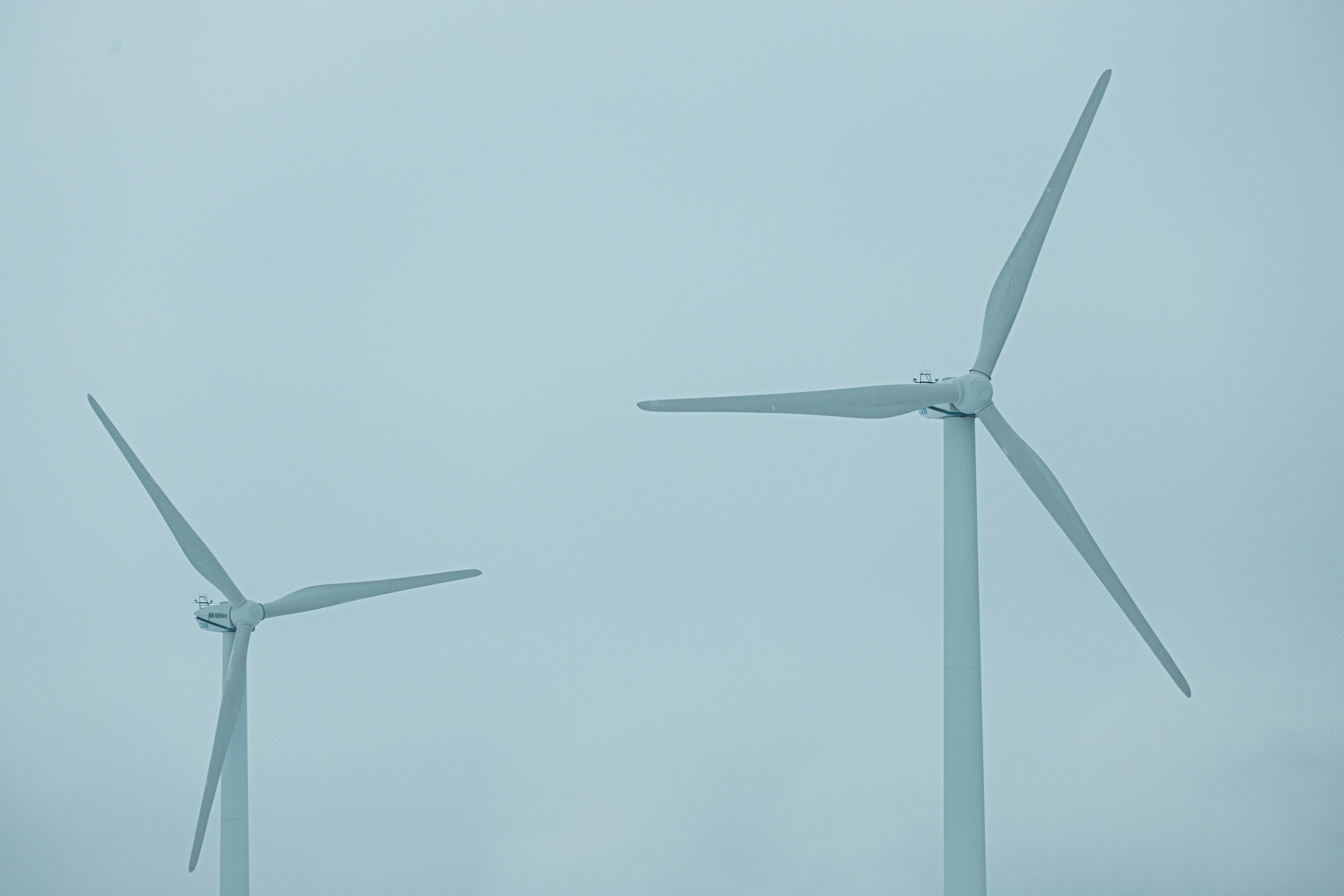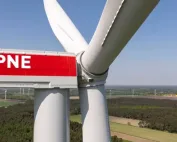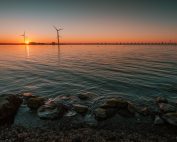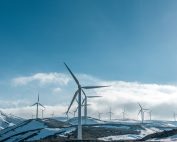This compelling article, authored by Niels Frederik Malskær, Senior Energy Advisor at the Danish Embassy in Warsaw, and Natalia Zofia Ścięgosz, Commercial Advisor, Energy at the Danish Embassy in Warsaw, delves into Poland’s pivotal role in the Baltic Sea’s energy landscape. The authors present an engaging analysis of Poland’s potential as the region’s emerging energy hub, and we encourage you to read on.
Offshore wind in the Baltic Sea has a 30-year legacy. In 1991, Denmark built the world’s first offshore wind farm, Vindeby, off the Danish coast. Fast forward to 2026–2027, and Poland is stepping in not just to catch up, but to lead. With cutting-edge technology, gigawatt-scale ambition, and political will coupled with industrial ability, Poland is ready to write the next chapter in the Baltic’s renewable future.
The first Polish offshore turbines are set to spin in 2026, each one more than twice the capacity of Vindeby’s pioneer farm. Experience from Denmark shows that thanks to continuous innovation and larger turbines, the average offshore wind farm utilization rate has improved by up to 70%. The European Commission estimates the total offshore wind potential of the Baltic Sea region at 93 GW by 2050. Globally, offshore wind capacity surpassed 80 GW at the end of 2024, led by China, the UK, Germany, the Netherlands, Denmark, and Belgium, primarily concentrated in the demanding, windy North Sea.
The energy transformation and the development of low-emission technologies prompt us to pay attention to the Baltic Sea. Poland is now firmly out of the starting blocks to join this global race with ambitious offshore wind targets set for 2040. The Baltic Sea is playing an increasingly important role in the European energy sector, both in supporting the energy transformation and ensuring our energy security.
What does Poland offer the offshore sector?
Poland is poised to take advantage of its strategic location and plans to build 18 GW wind farms in the Baltic Sea before the end of 2040. The first two projects, both owned by large domestic players with international partners have obtained FID and are in the construction phase.
Poland’s prime location at the southern Baltic Sea coast, mature port and heavy industrial infrastructure, as well as a growing, skilled workforce gives a strong hand to play. Offshore wind boosts our energy security and energy transition as a large-scale renewable energy source to reduce reliance on coal and external suppliers.
While only around 2,300 km² of the Polish Exclusive Economic Zone (approx. 22,500 km²) are currently designated for offshore development, it already carries massive potential up to 33 GW of capacity; potentially producing an estimated 130 TWh annually according to the Polish Wind Energy Association (PWEA).
Mature industrial base and long-term political commitment
Gdynia, Gdańsk and Szczecin are already prepared or being upgraded, to serve as major installation and service hubs, with several smaller service to host O&M facilities and other services. On selected sites, construction is underway. Close cooperation with the shipbuilding and heavy industry sectors securing jobs, and economic growth. A number of programs offer cross, or retraining from the steel, coal and shipbuilding sectors, as well as supporting the intake of the thousands of new staff needed to make the offshore dream a reality.
Offshore wind is a key pillar of Poland’s energy policy, which aims for 5.9 GW of installed capacity by 2030 and 11 GW by 2040, with the updated Offshore Wind Act scaling this up to 18 GW. Poland provides strong regulatory and policy support for offshore wind development, exemplified by the Offshore Wind Act of 2020, which introduced a two-phase support system based on contracts for difference, along with close integration with EU regulations and funding.
Currently, 19 offshore wind projects in Poland have received location permits (PSZW): 7 under Phase I of the support system (with final investment decisions and construction underway), 12 under Phase II, with auctions scheduled no later than December 2025, and a possible additional round in 2026.
Poland’s offshore wind ambitions are not without their challenges. One key issue is the administrative complexity of permitting processes, which still require significant streamlining to support faster project delivery.
There is also competition for marine space, particularly with fisheries, biodiversity preservation areas, and busy shipping lanes. Additionally, regional competition poses a challenge, as other countries around the Baltic Sea, including Sweden, Norway, and Lithuania are also rapidly expanding their offshore wind sectors.
Security concerns in the Baltic region may further complicate long-term planning and increase costs. Military considerations and fluctuations in energy prices have already hindered project development among some of Poland’s neighbors.
Despite these obstacles, Poland is not standing still. With 19 projects already in the pipeline, supportive regulation, strong political backing, and a dynamic domestic supply chain, the country is pressing ahead. Poland is not just planning, it is building.
International investment and financing
Poland’s offshore wind revolution is attracting major foreign investors and financial institutions. Strategic joint ventures include: Orlen with Canada’s Northland Power, PGE with Denmark’s Ørsted, and Polenergia with Norway’s Equinor. There are also solo projects by Germany’s RWE and the company Ocean Winds owned by EDP Renewables and ENGIE. These global players bring not only capital, but also world-class expertise, experience, and supply chain connections. Already some of those projects have secured Final Investment Decisions (FID) and are progressing into construction.
What’s more, the sector enjoys strong financial backing from institutions such as the European Investment Bank (EIB) which supports offshore wind as part of its climate investment strategy and the Export and Investment Fund of Denmark (EIFO), which is strongly committed to nearshoring the wind energy supply chain. Commercial banks are also increasingly active offering green bonds, project finance, and syndicated loans tailored to large-scale RES infrastructure. The clear regulatory framework, CfD system, and inclusion of offshore wind in Poland’s National Recovery Plan (KPO) have made it an attractive, low-risk investment environment.
Poland as value multiplier, broader role in Europe
Offshore wind is much more than just the production of green energy at sea. It is the central element of the integrated energy infrastructure that will drive economic development for the entire region, and Poland has a chance to become a hub in several ways.
Firstly, Poland has the chance to become a transmission hub by investing in interconnectors with neighbouring countries. This would make Poland an important centre of energy exchange in the Baltic region much like Denmark is in the North Sea. Poland stands to gain both higher profitability for its new generation capacity at sea and on shore, while strengthening national and European energy security by expanding grid connections with neighbouring countries. Harmony Link (Poland-Lithuania) is a great example, but with EU electricity demand expected to rise by 60% by 2030, and 40% of transmission infrastructure already over 40 years old, Europe will require €584 billion in investments, and cross-border capacity must double. Therefore, opportunities for transnational energy infrastructure across the Baltic should be analysed, like via Energy Island Bornholm.
In the broader EU energy puzzle, Poland plays a key role via ENTSO-E the European network of transmission system operators. Through Polish TSO Polskie Sieci Elektroenergetyczne (PSE), the country is actively involved in grid integration, system balancing, and planning the energy infrastructure of the future.
The ORLEN Group and S&P Global Commodity Insights’ report highlights the Baltic Sea region’s strategic importance for Europe’s decarbonization, accounting for over one-third of EU energy consumption and emissions. The region’s renewable energy potential is estimated at 4,400 TWh, significantly surpassing the energy production of the Baltic countries in 2023. Cooperation among the eight regional countries (Poland, Germany, Denmark, Sweden, Finland, Lithuania, Latvia, and Estonia) could accelerate energy transition goals by leveraging this potential. Differences in electricity costs (€15–30/MWh) present trade opportunities. The report estimates a yearly saving of €9bn in power generation if the grids were more fully integrated and able to trade smoothly across markets. Enhanced regional cooperation, including a dedicated working group, cost-sharing mechanisms, and streamlined permitting are some of the suggestions from the report to begin enjoying these benefits.
Copenhagen Call to Action
At WindEurope 2025 in Copenhagen, held from 8–10 April, the European wind industry convened for its largest annual conference and exhibition, attracting a record-breaking 18,000 participants including a strong Polish delegation. The event highlighted wind energy’s vital role in Europe’s energy transition, with wind already supplying 20% of the continent’s electricity and on track to become the EU’s leading power source before 2030. The EU has set ambitious targets for wind to cover 35% of electricity demand by 2030 and over 50% by 2050. Building more onshore and offshore wind energy is central to harvesting the energy benefits of the Baltic.
In this context, the industry unveiled the Copenhagen Call to Action, outlining three urgent policy priorities: full implementation of the revised EU permitting rules, removal of barriers to electrification, and de-risking of wind investments through a steady pipeline of two-sided Contracts for Difference (CfDs). These measures are key to advancing the EU’s Clean Industrial Deal, accelerating electrification and renewable deployment as pillars of Europe’s energy security, industrial resilience, and climate leadership.
Poland’s strong presence at the event demonstrated the country’s accelerating momentum in offshore wind. With the right regulatory support, wind energy from the Baltic Sea can play a transformative role in strengthening Poland’s energy security and boosting its economy through the creation of a modern, robust supply chain.
Thankfully, Poland is already taking action. The country has introduced a well-designed CfD scheme, is making steady progress on offshore wind development, aligning with the updated EU permitting framework, and is beginning to actively engage in regional cooperation across the Baltic. Polish transmission system operator PSE is also leading by example, working to streamline grid connection procedures and eliminate non-viable or “zombie” projects from the queue.
These developments reflect the three clear actions that governments across Europe can take today to place wind energy at the core of the continent’s industrial competitiveness. Poland is proving it can be a role model in moving in the right direction.
Poland’s moment to lead
Developments in offshore wind, digitalization, electrification, and green hydrogen are all converging in the Baltic, and Poland is ideally place to benefit by coupling these sectors. With so many opportunities arriving at a time of such global instability can only be matured and benefitted from through cooperation. Cooperation in the Baltic Sea region as such to ensure reasonable energy prices requires an even more deliberate approach to driving new developments and projects at the regional level. With offshore wind maturing, and economic development in Northern Poland picking up speed, Poland is seeing the benefits of leadership in the next chapter of the history of the Baltic.
This is Poland’s moment to lead the offshore transformation of the Baltic Sea and become offshore wind hub in region. With 18 GW offshore wind projects in pipeline and 33 GW of potential coupled with strong public-private partnerships, EU-aligned policy, and an adaptable industrial base, Poland is no longer a follower. Poland is becoming the anchor of the offshore wind future in Central and Eastern Europe and could be one of its main architects in the EU.
Authors:
Niels Frederik Malskær, Senior Energy Advisor at the Danish Embassy in Warsaw, and Natalia Zofia Ścięgosz, Commercial Advisor, Energy at the Danish Embassy in Warsaw
